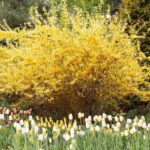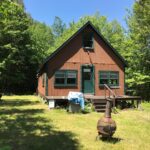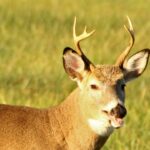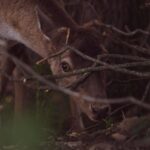Embark on an unforgettable adventure with Alberta mule deer archery hunts. Immerse yourself in the heart of pristine wilderness, where the thrill of the chase meets the serenity of nature. Whether you’re a seasoned hunter or a novice eager to conquer the untamed, this guide will equip you with the knowledge and strategies to make your hunt a triumph.
From navigating the intricate regulations to mastering the art of archery, we’ll cover every aspect of Alberta mule deer archery hunts. Let’s dive into the wild and discover the secrets to an unforgettable experience.
Alberta Mule Deer Archery Hunts
Alberta is renowned for its exceptional mule deer archery hunts, offering an unparalleled wilderness experience for bowhunters. These hunts are highly regulated to ensure sustainability and fair chase principles, providing hunters with a challenging and rewarding pursuit.
Regulations and Seasons
Mule deer archery hunts in Alberta are subject to specific regulations and seasons to ensure the conservation of the species and promote ethical hunting practices. Hunting seasons vary depending on the Wildlife Management Unit (WMU) and can typically range from late August to early November.
Hunters must obtain a valid hunting license and archery tag, adhere to bag limits, and comply with all applicable hunting regulations.
Hunting Methods and Techniques
When it comes to archery hunting for mule deer, there are several effective techniques to employ. Each method offers its own advantages and challenges, and the choice often depends on the hunter’s preferences and the specific hunting environment.
Stalking
Stalking involves quietly and stealthily approaching mule deer, often from downwind to avoid detection. This technique requires patience, keen observation skills, and the ability to move silently through the terrain. Hunters may use natural cover, such as trees, brush, or rocks, to conceal their approach.
Stalking is most effective in areas with dense vegetation or broken terrain that provides ample cover.
Stand Hunting
Stand hunting involves setting up an elevated platform or blind in a location frequented by mule deer. This method allows hunters to remain concealed while waiting for deer to come within range. Stand hunting is often used in open areas or along trails and feeding grounds.
It requires careful selection of the stand location and proper scent control to avoid spooking deer.
Spot-and-Stalk
Spot-and-stalk combines elements of both stalking and stand hunting. Hunters first locate mule deer from a distance using binoculars or a spotting scope. Once a suitable target is identified, they carefully stalk the animal, taking advantage of natural cover and terrain features.
Spot-and-stalk requires a combination of scouting, observation, and quick decision-making skills.
Tips for Successful Archery Hunts
In addition to choosing the appropriate hunting method, there are several general tips that can help increase your chances of success during an archery hunt for mule deer:
- Practice regularly:Develop proficiency in your archery skills through consistent practice.
- Know your equipment:Be familiar with the capabilities and limitations of your bow and arrows.
- Scout the area:Spend time observing deer patterns and identifying potential hunting spots.
- Control your scent:Use scent control measures, such as scent-eliminating clothing and sprays, to avoid alerting deer to your presence.
- Be patient:Archery hunting requires patience and the ability to wait for the right opportunity.
Hunting Zones and Populations
Alberta’s vast landscapes offer diverse hunting zones for mule deer enthusiasts. These zones vary in terrain, vegetation, and mule deer populations, providing unique challenges and opportunities for hunters.
Hunting Zones
Alberta is divided into 22 hunting zones for mule deer, each with its own regulations and population dynamics. The zones are distributed across the province, encompassing various ecosystems and habitats.
- Zone 1:Northeastern Alberta, known for its rolling hills and aspen forests.
- Zone 2:Northwestern Alberta, characterized by boreal forests and mountainous terrain.
- Zone 3:West-central Alberta, featuring mixed forests and open meadows.
- Zone 4:Southwestern Alberta, renowned for its badlands and coulees.
Mule Deer Populations
Mule deer populations in Alberta fluctuate over time due to factors such as habitat conditions, weather patterns, and hunting pressure. The province conducts annual population surveys to monitor trends and ensure sustainable management.
According to the latest estimates, Alberta’s mule deer population is approximately 150,000. The highest concentrations are found in the southwestern and west-central regions of the province.
Trophy Quality and Antler Characteristics
Mule deer trophy quality is a highly sought-after aspect of the hunting experience. Several factors influence the trophy quality of a mule deer, including genetics, age, nutrition, and environmental conditions. Evaluating mule deer antlers is a crucial aspect of determining trophy quality, and various characteristics are considered.
Antler Characteristics
Antler characteristics are an essential factor in assessing mule deer trophy quality. The following are key characteristics used in the evaluation process:
- Spread:The distance between the tips of the main beams.
- Length:The length of the main beams from the base to the tip.
- Mass:The thickness and circumference of the main beams and tines.
- Tines:The number and length of the tines extending from the main beams.
- Symmetry:The balance and evenness of the antlers on both sides of the head.
- Overall Impression:The general appearance and aesthetic appeal of the antlers.
Ethical Considerations and Fair Chase
In the realm of archery hunting, ethical practices and the principles of fair chase hold paramount importance. Ethical hunting entails adhering to a set of guidelines that ensure the well-being of both the quarry and the hunter while upholding the integrity of the hunt.
The concept of fair chase centers around providing the animal a reasonable chance of escape and ensuring that the hunter’s skills and abilities are the primary factors determining the outcome of the hunt. Fair chase demands that the hunter respect the animal’s instincts and behavior, avoiding any tactics that could unfairly advantage the hunter.
Principles of Fair Chase
Fair chase encompasses several key principles that guide ethical archery hunting:
- Giving the animal a fair chance:Hunters must avoid using unethical tactics like baiting, hounding, or electronic calling devices that give them an unfair advantage.
- Using ethical hunting methods:Archery hunting should rely solely on the hunter’s skill and proficiency with a bow and arrow. The use of crossbows, rifles, or other weapons is generally considered unethical.
- Respecting the animal’s behavior:Hunters should refrain from disturbing or harassing animals during non-hunting seasons. Understanding the animal’s natural behavior and patterns is crucial for ethical hunting.
- Promoting wildlife conservation:Ethical hunters actively support wildlife conservation efforts, ensuring the sustainability of wildlife populations for future generations.
Hunting Gear and Equipment
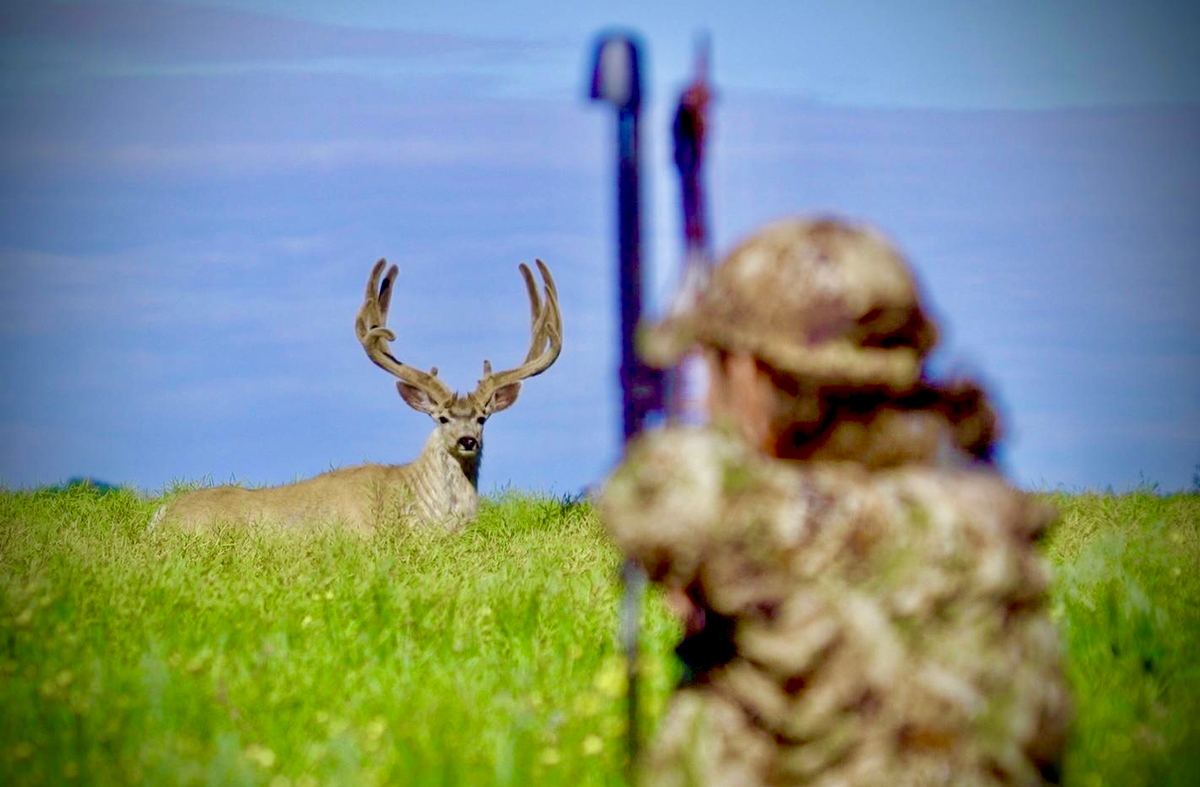
Alberta mule deer archery hunts demand specific gear and equipment to ensure success and safety in the field. Selecting the right gear is crucial for ethical and effective hunting.
The following table Artikels essential gear for Alberta mule deer archery hunts:
Essential Gear
| Category | Item |
|---|---|
| Bow and Arrows | Compound or traditional bow with appropriate draw weight and arrows |
| Optics | Binoculars, rangefinder, and spotting scope |
| Clothing | Layered clothing system, including moisture-wicking base layers, insulating mid-layers, and waterproof outer layers |
| Boots | Sturdy, waterproof, and comfortable hiking boots |
| Pack | Daypack or backpack with enough capacity for gear and harvested meat |
| Other | First-aid kit, knife, flashlight, and whistle |
Specific recommendations for gear include:
Bow and Arrows
Compound bows with draw weights of 50-70 pounds and traditional bows with draw weights of 45-60 pounds are suitable for mule deer hunting. Arrows should be matched to the bow’s draw weight and fitted with broadheads designed for big game.
Optics
Binoculars with 8x or 10x magnification are essential for scanning the terrain and locating game. A rangefinder is crucial for accurate distance estimation, while a spotting scope can provide detailed views of distant animals.
Physical and Mental Preparation
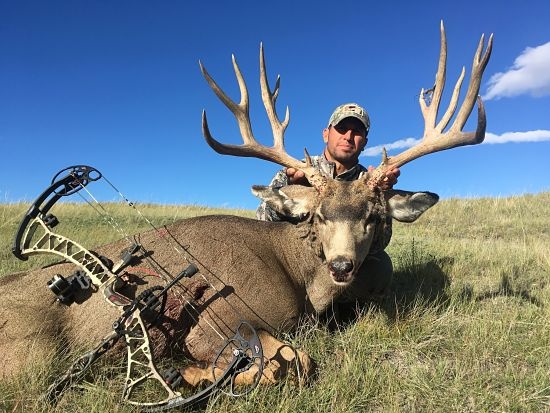
Mule deer archery hunts demand both physical and mental toughness. Hunters must endure long hikes, often in challenging terrain, and be able to withstand the physical exertion of archery. They must also be mentally prepared for the challenges of hunting in wilderness areas, where success is often elusive.
Physical Preparation
To prepare for the physical demands of a mule deer archery hunt, hunters should begin a training program several months in advance. This program should include cardiovascular exercise, strength training, and hiking. Hunters should also practice shooting their bows regularly, both at short and long distances.
Alberta mule deer archery hunts offer an exciting challenge for seasoned archers. For those seeking an alternative hunting experience, 300 blackout rifle deer hunting provides a thrilling combination of precision and power. Whether you prefer the traditional archery approach or the modern rifle method, the pursuit of Alberta’s majestic mule deer promises an unforgettable adventure.
Mental Preparation
In addition to physical preparation, hunters should also prepare mentally for the challenges of a mule deer archery hunt. This includes being prepared for long periods of solitude, dealing with the elements, and facing the possibility of failure. Hunters should also be mentally tough and resilient, able to bounce back from setbacks and stay focused on their goals.
Hunting Tactics and Strategies
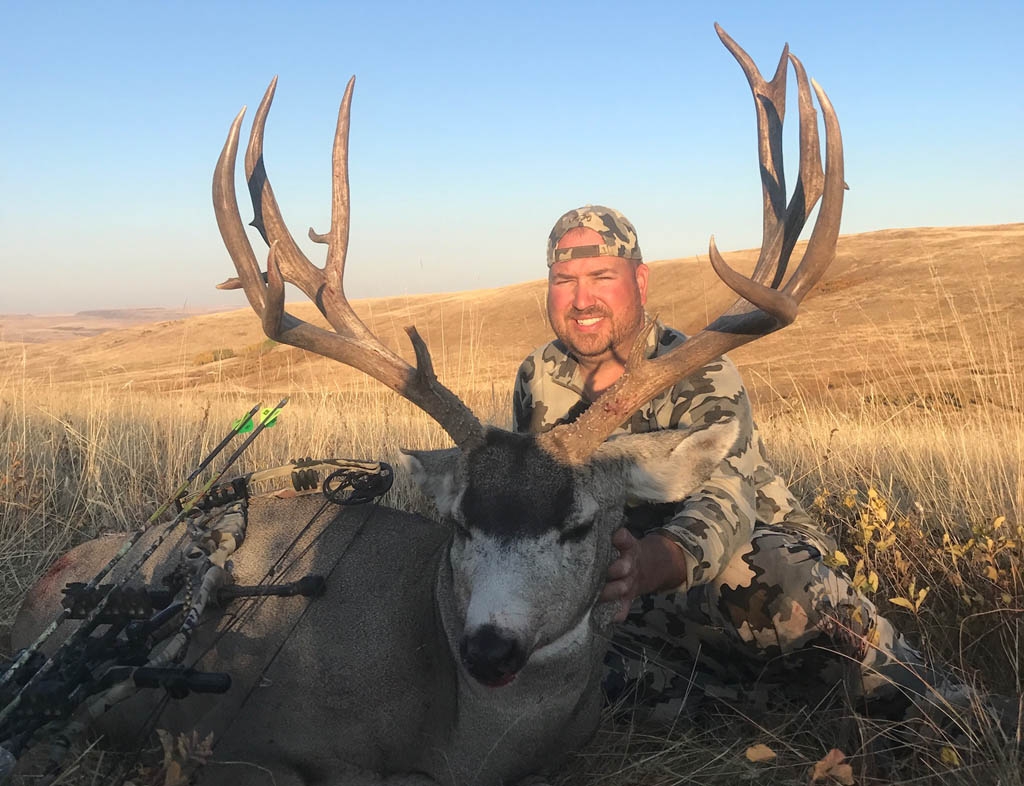
Mule deer hunting involves employing effective tactics and strategies to increase the chances of success. Different approaches can be used, including spot-and-stalk, stand hunting, and rattling.
Alberta mule deer archery hunts are a popular way to experience the outdoors and harvest a trophy buck. After a successful hunt, many hunters choose to preserve the skull of their deer as a memento. One of the best ways to do this is to use borax for deer skull . Borax is a natural mineral that helps to dry out the skull and prevent it from decaying.
It is also a relatively inexpensive and easy-to-use method. Once the skull has been cleaned and dried, it can be mounted on a plaque or displayed in a case. Alberta mule deer archery hunts are a great way to connect with nature and harvest a trophy buck.
By using borax to preserve the skull, you can create a lasting memory of your hunt.
Spot-and-stalk involves cautiously moving through the hunting area, using natural cover and terrain to approach mule deer. This technique requires patience, stealth, and the ability to read animal behavior. Stand hunting involves setting up a stand in an area where mule deer are likely to pass, allowing the hunter to wait for the animals to approach.
Rattling
Rattling is a technique used to attract mule deer by imitating the sound of antlers clashing during a fight. This can be done by using rattling antlers or by banging two hard objects together. Rattling can be effective in attracting bucks during the rut, but it should be used cautiously as it can also spook deer if done incorrectly.
When approaching and harvesting mule deer, it is important to consider factors such as wind direction, cover, and animal behavior. Staying downwind of the deer and using natural cover to conceal your approach is crucial. Patience and understanding of mule deer behavior are essential for successful hunting.
Field Dressing and Meat Care
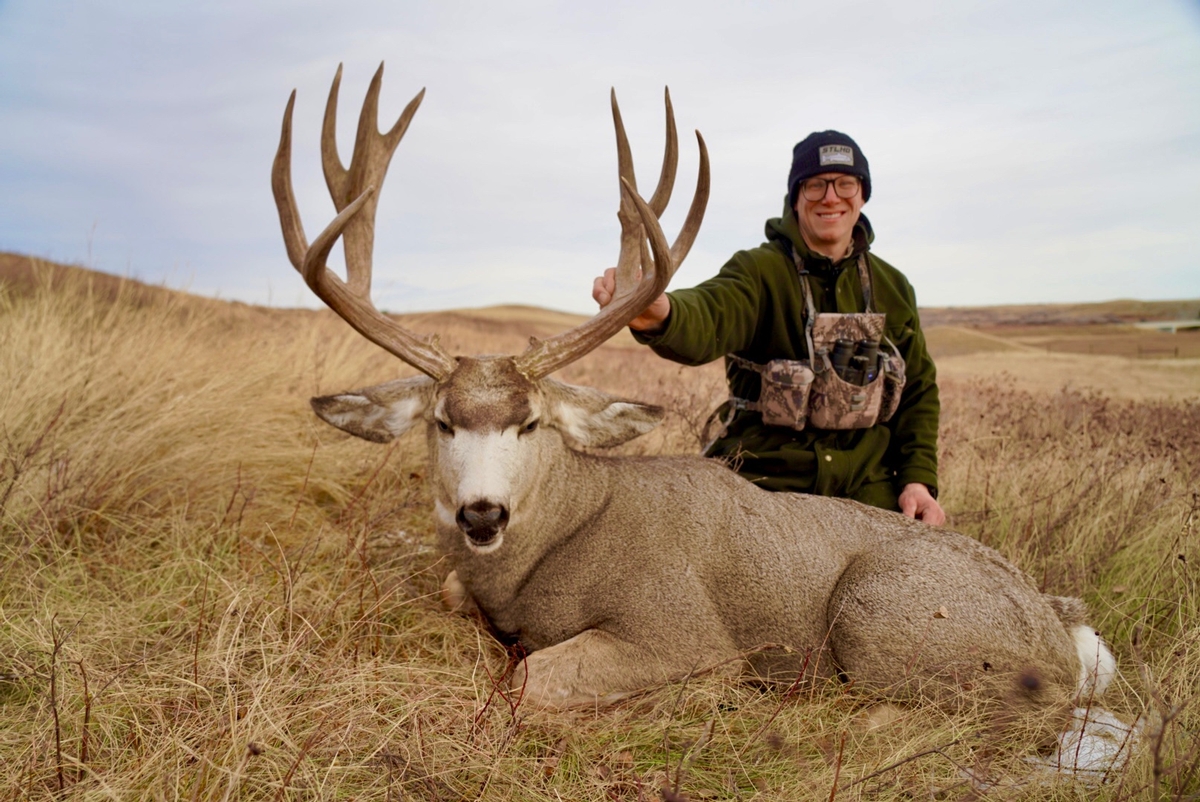
Field dressing and proper meat care are crucial to preserve the quality of your venison.
Field Dressing
- Place the deer on its back with its head downhill to allow blood to drain.
- Insert your knife into the chest cavity just behind the rib cage and cut towards the pelvis, taking care not to puncture the intestines.
- Remove the internal organs, being careful not to spill any fluids.
- Rinse the body cavity thoroughly with cold water.
- Cut off the head and legs for easier transportation.
Meat Care
- Cool the meat as soon as possible to prevent spoilage.
- Place the meat in a clean cooler with ice or ice packs.
- Change the ice regularly to maintain a cold temperature.
- If possible, hang the meat in a cool, dry place to further cool it.
- Remove any visible fat or connective tissue from the meat.
- Cut the meat into desired portions and vacuum seal or wrap in freezer paper for storage.
Hunting Success and Record Keeping
Achieving hunting success in Alberta mule deer archery hunts relies on several crucial factors, including:
Factors Contributing to Hunting Success, Alberta mule deer archery hunts
- Skill and Experience:Proficiency in archery, understanding of deer behavior, and effective stalking techniques enhance chances of success.
- Physical Fitness:Archery hunting often involves challenging terrain and requires physical endurance for navigating long distances and retrieving game.
- Scouting and Preparation:Thorough scouting to locate deer patterns, identifying potential stand sites, and preparing gear in advance is essential.
li> Patience and Persistence:Archery hunting demands patience and persistence as deer can be elusive and wary.
Record keeping is crucial for analyzing past hunts and improving future strategies. Maintaining a detailed log of:
Importance of Record Keeping
- Hunting Locations:Record GPS coordinates or landmarks of successful and unsuccessful hunting spots.
- Deer Observations:Note deer behavior, feeding patterns, and movement patterns.
- Hunting Conditions:Track weather, wind direction, and other environmental factors that influence deer activity.
li> Gear Performance:Evaluate the effectiveness of archery equipment, including bow performance and arrow selection.
By meticulously recording this information, hunters can gain valuable insights into deer behavior, refine hunting techniques, and increase their chances of success in future hunts.
Conclusion: Alberta Mule Deer Archery Hunts
As you embark on your Alberta mule deer archery hunt, remember the thrill of the chase, the beauty of the wilderness, and the satisfaction of ethical hunting. May your arrows fly true, your trophies be magnificent, and your memories last a lifetime.
The pursuit of mule deer in Alberta’s breathtaking landscapes is a testament to the enduring spirit of adventure and the deep connection between hunters and the natural world.
General Inquiries
What are the regulations for Alberta mule deer archery hunts?
Regulations vary depending on the hunting zone. Check the Alberta Fish and Wildlife website for specific details on seasons, bag limits, and licensing requirements.
What archery techniques are effective for mule deer hunting?
Spot-and-stalk, stand hunting, and rattling are all effective archery techniques for mule deer. The choice of technique depends on the terrain and hunting conditions.
How can I improve my chances of success on an Alberta mule deer archery hunt?
Practice your archery skills, study mule deer behavior, and scout the hunting area thoroughly. Patience and perseverance are also key to a successful hunt.
What are the ethical considerations for Alberta mule deer archery hunts?
Respect the animal, follow fair chase principles, and ensure a clean and humane harvest. Avoid unethical practices such as baiting or hounding.
